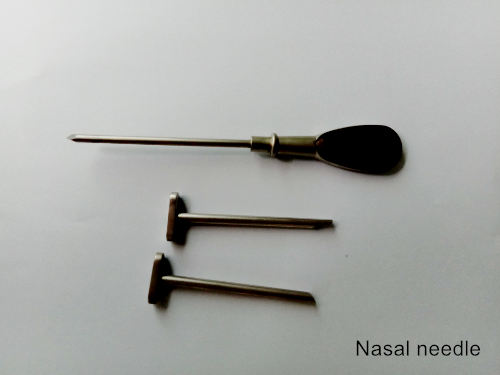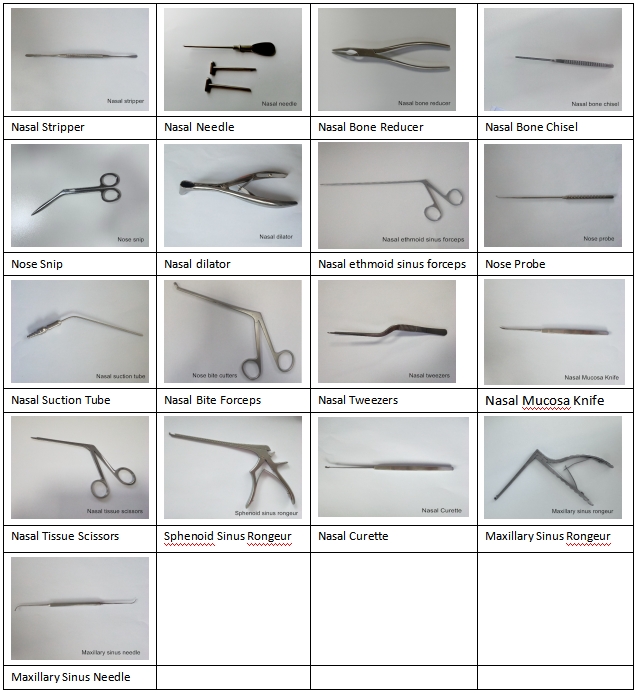Otorhinolaryngological surgical instruments are specialized tools for the diagnosis, treatment and surgery of ear, nose, throat, head and neck diseases. Their design takes into account the needs of fine operation and the characteristics of human anatomical structure
![]()
The nasal puncture needle is usually composed of a needle body and a handle. The tip of the needle body is designed in various shapes, including flat head, cross, ball head, pointed head, round head, curved hook, etc., to meet the needs of different operations

Material and design features
Material: mainly using medical stainless steel or titanium alloy, both corrosion resistance and mechanical strength, part of the blade using carbon steel to enhance sharpness
Structure: Most of the instruments are designed to be detachable (for example, the sinus puncture device is separated from the handle), which is easy to clean and sterilize. Precision instruments, such as nasal endoscopes, should be protected from collision and moisture
Use and maintenance points
Non-sterile instruments need to be sterilized by high temperature and pressure or ethylene oxide, and precision parts (such as endoscopes) are treated by low temperature plasma
The suction tube should be washed regularly to prevent blockage
Clean blood immediately, fine instruments (such as nasal mucosal knife) need to be brushed by hand, avoid the use of hard tools; Lubricate joints to prevent corrosion
![]()
Nasal surgical instruments meet different surgical needs through diverse designs, from basic cutting to complex minimally invasive operations. The core goal is to improve nasal function and reduce complications. Reasonable selection of instrument type, standardized operation process and strict maintenance are the keys to ensure the success of the operation
Sinusitis surgery:The pus was drained with a sinus puncture device, and the lesion mucosa was cleaned with sinus forceps with suction tube
Nasal polypectomy:To reduce the risk of recurrence, the base of polyps is clamped by nasal polyp forceps and resected with the assistance of nasal mucosal knife
Nasal septum deviation was corrected:The surgical field was exposed by nasal distraction forceps, the deviated cartilage was repaired by sinus rongeur forceps, and the bleeding was stopped by low-temperature plasma equipment
Tumor biopsy and resection:Nasal mucosal forceps sampling combined with endoscopic system positioning ensures accurate resection

Contact: Ms.Ye
Phone: 18030057721
E-mail: info@xmekoda.com
Whatsapp:008618030057721
Add: Torch High-tech Zone(Tongxiang) Industrial Base,Xiamen,China
